Do I need to pinch bell peppers: pros and cons, a guide to the correct formation of a bush
Bell pepper is a capricious culture demanding climatic conditions, soil composition and care. It is not easy for an inexperienced gardener to grow a rich harvest on his site.
One of the recommended techniques for increasing yields is pinching the bushes. The article will tell you whether you need to pinch the bell pepper and how to do it correctly.
The content of the article
Do I need to pinch bell peppers
There is no definite answer to this question. Those who are engaged in the cultivation of this vegetable make a decision based on the purpose and growing conditions, as well as the characteristics of the variety.... First, let's figure out why pinching is done at all.
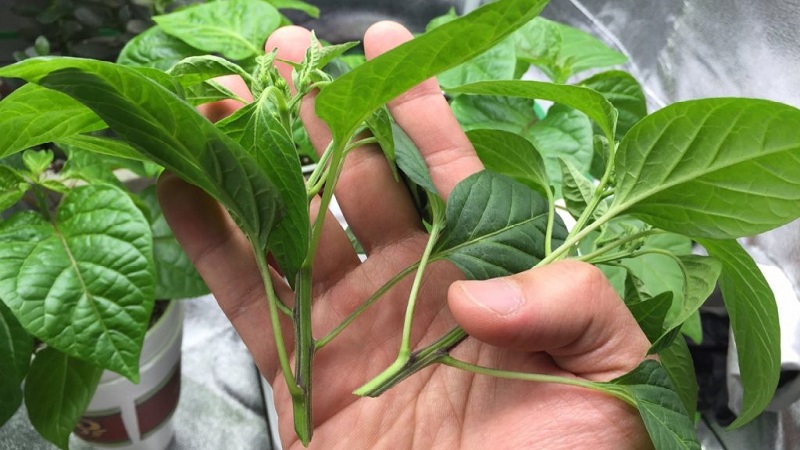
The meaning of the procedure
Pinching involves removing the apical buds (growth points)... This is one of the agricultural techniques aimed at plant formation along with the removal of excess shoots and foliage.
Important... Thanks to pinching, upward growth is suspended and the development of stepsons is activated, which give the bush a spherical appearance.
Pinching is carried out in order to stop the growth of new stems... Thus, the bush directs all its forces to the ripening of already formed fruits. If this is not done, then many small and thin-walled fruits will form on the plant.
The varieties that require pinching
Domestic and foreign breeders have bred a wide variety of crop varieties. Some of them need a mandatory pinching... In this case, the seed producer directly indicates on the packaging how and when to form the bush.
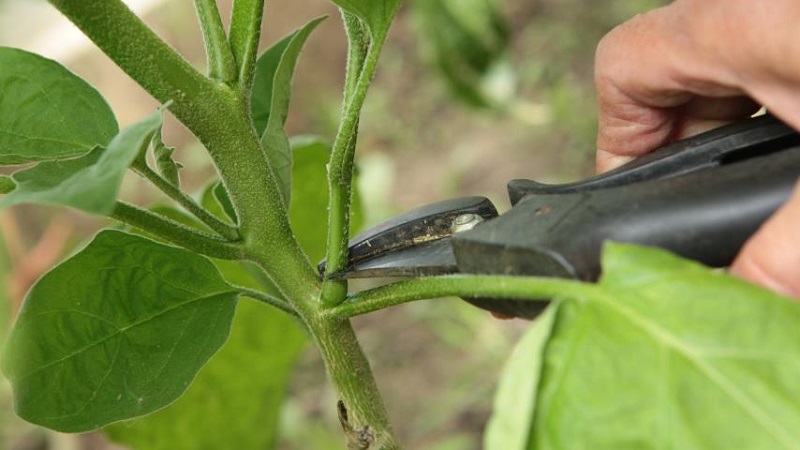
These are, for example, vigorous hybrids that grow up to 2-3 m in height... The bushes of these plants have lush greenery and will not grow and develop well without formation. These varieties include Aries, Boatswain, Orange wonder, Forward, Elephant, Bourgeois, Merchant.
Important... All varieties of sweet pepper are divided into indeterminate (having no restrictions on the growth of green mass) and determinant (the growth of the bush stops during the fruiting period).
Indeterminate crop varieties need to be shaped to limit growth green mass, better ventilation and accelerated fruit ripening.
Small determinant varieties form compact bushes 60-70 cm high... These are, for example, Brother Fox, Eroshka, Chardash, Pinocchio F1... They do not need compulsory formation and, subject to the technology of cultivation, they grow well and bear fruit without pinching.
Attention... With thickened plantings of determinants, the formation of bushes still needs to be carried out. This will provide air and light access to all plants.
Also compact decorative varieties do not need growth restriction.designed for growing on balconies and windowsills. These are such varieties as Treasure Island, Watercolor, Curiosity, Carat, Etude. Medium bushes should be removed only from sterile shoots, which will improve their lighting and natural ventilation.
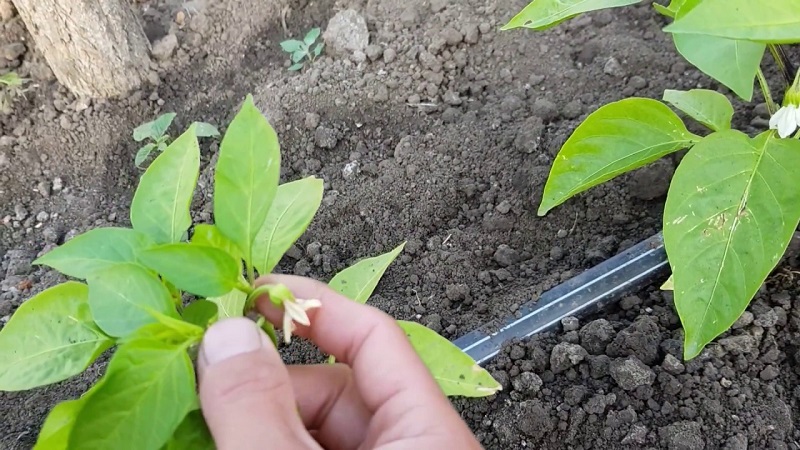
When is pinching necessary
When answering the question whether to pinch or not, it is also worth considering the weather conditions. At high humidity combined with high air temperatures, the formation pepper bushes are carried out for the prevention of fungal diseases.
If the summer turned out to be dry and hot, then you should not thin out the green mass of the bushes... Lush foliage shades the bushes from the sun and prevents soil moisture from evaporating.
If you don't pinch the peppers
Neglecting the pinching procedure when growing tall varieties leads to the following consequences:
- poorly developed root system - as a result, the bush does not receive enough water and nutrients;
- decrease in yield indicators - new shoots grow from internodes, on which additional fruits are tied;
- without pinching, tall varieties actively build up green mass, the bush grows powerful, and the fruits are small and thin-walled;
- without forming, the bushes grow strongly, they become cramped, and the plants begin to ache.
If the seed manufacturer recommends forming the plants, these recommendations should not be ignored.
Terms of the procedure
They begin to pinch off the tops after the appearance of 5-7 leaves... As a rule, at this time the bushes grow up to 15-20 cm and begin to branch, dividing into two branches.
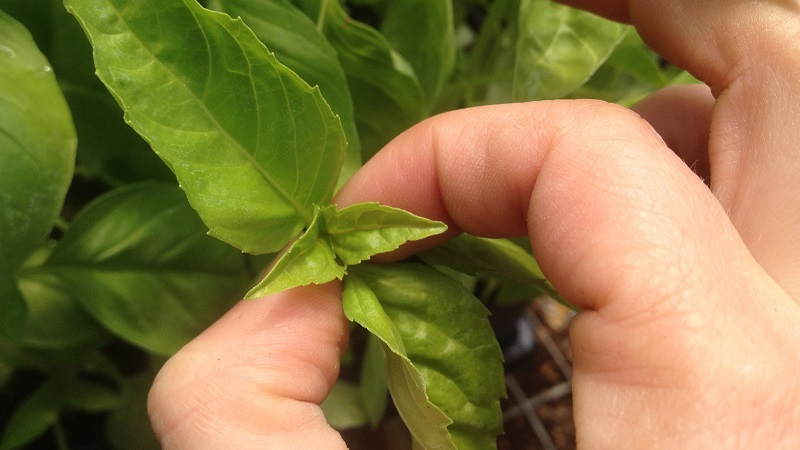
A crown bud appears in this fork, which is removed to enable further development of the bush.... Each branch will form fruits and thus the overall yield will increase.
Attention... If you want pepper seeds, then leave the crown bud on 1-2 bushes. It forms the healthiest seeds.
Immediately after a pick or plant transplant, do not disturb... After pinching is an injury for the bush and additional tests during this period are useless for the plant.
Another sign that it's time to start shaping - staining of internodes.
It can be useful:
Pepper planting rules: preparation, timing and nuances of the process
Step-by-step instruction
Pinching is a lengthy process that continues until the bush grows to the desired height... Schemes for the formation of plants in one, two and three stems are attached.
There are several stages in the formation of a pepper bush:
- Pinching the crown bud at the first fork in the stem. This bud contains an inhibitor substance that prevents the bush from fully bearing fruit. When planting early, to slow down the growth of the plant, the bud is left for a while.
- Pinching off excess stems. 2-3 main shoots are left on the bush, which fully develop and set the shape. Leave the strongest branches. The pinching will give an impetus to the formation of the lateral processes that form the bush.
- Removal of sterile shoots and lower leaves. The barren branches and excess foliage obscure the plant and take away nutrients. Removing them improves air circulation and light access.
- Pinching of skeletal branches. Skeletal shoots are pinched after enough fruits have formed on the bush. On average, 20-25 fruits are left on one bush. This will make the peppers grow larger and fatter. Formed bushes with fruits are shown in the photo.
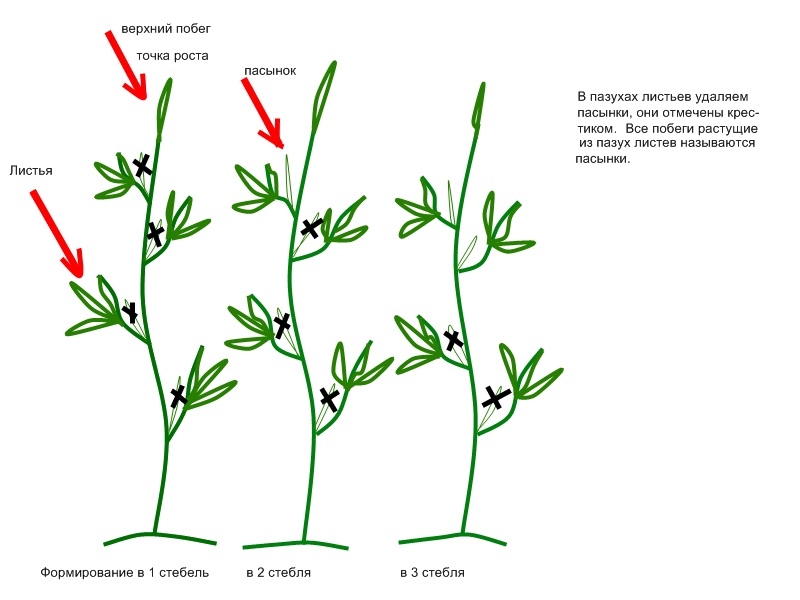
The pinching is repeated as new stems grow... No more than 2-3 leaves and no more than one stepson are cut from one plant per day. If you remove more at a time, the pepper can get sick and die.
Tips & Tricks
The recommendations of experienced gardeners will help beginners to avoid problems during the procedure:
- form the plant gradually - if you remove all the extra stems at one time, it will wither and die;
- stepsons are removed as soon as they appear;
- pinching is not carried out immediately after watering, while the plants are still wet, since there may be pathogens in the water;
- after the procedure, the plants are also not watered for several days - this way they will recover faster;
- removed stems and leaves are removed from the garden;
- form only healthy plants, sick people may not survive the tests and die;
- a sharp, disinfected instrument is used to remove stems and leaves;
- it is useful to treat the cut points with crushed activated carbon for disinfection.
Conclusion
Bell pepper shaping is the removal of excess growth points in order to increase yields.To pinch or not, each gardener decides for himself. This takes into account the varietal characteristics of the culture and growing conditions.